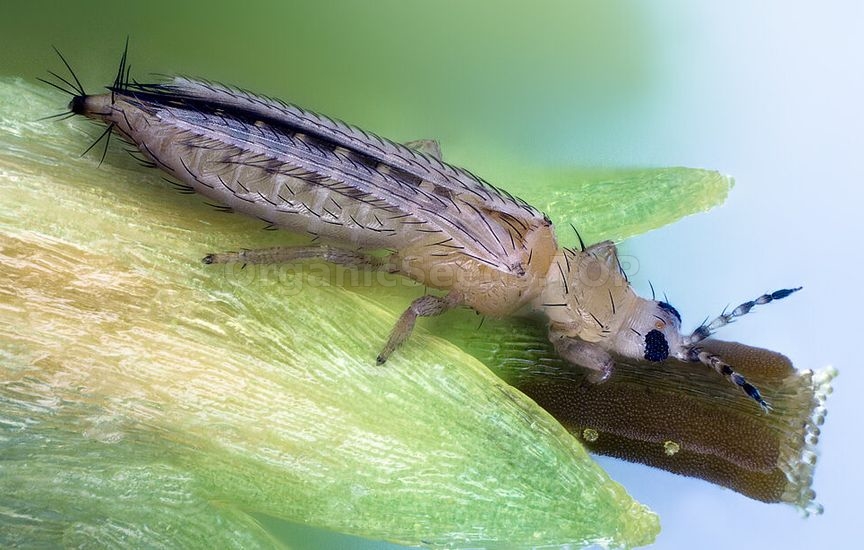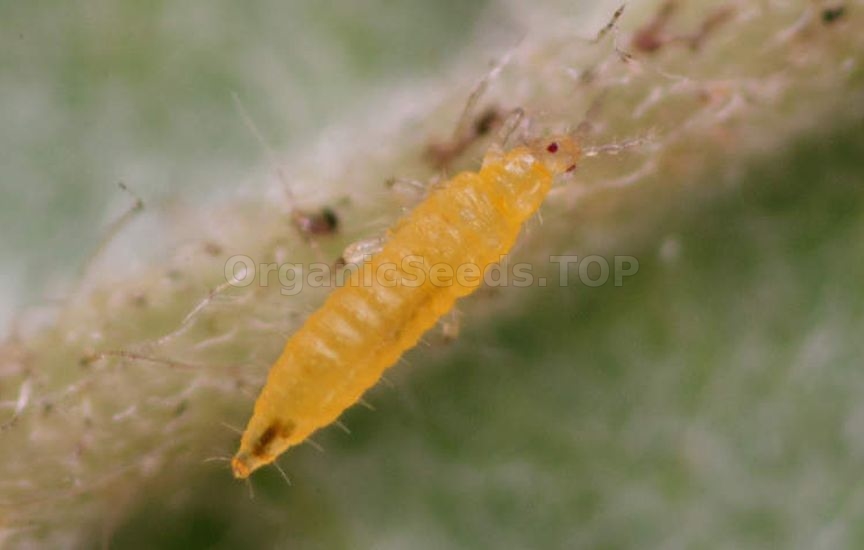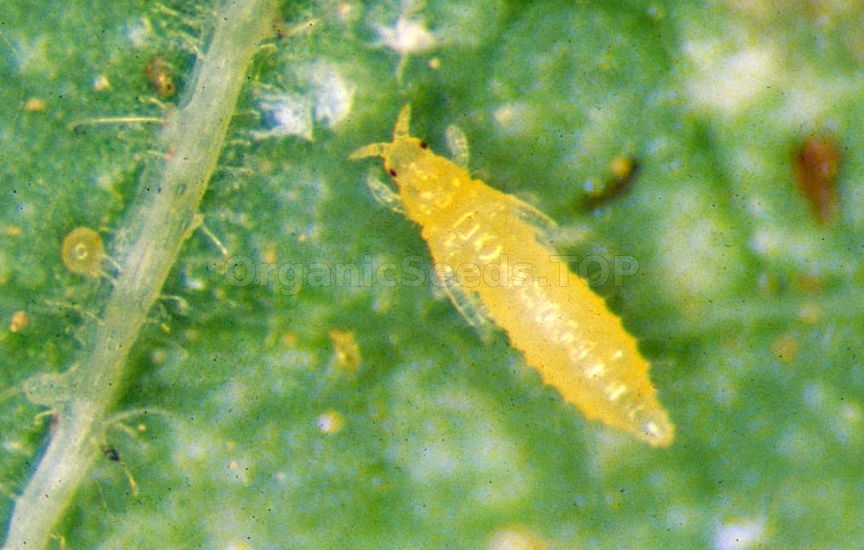 Western flower thrips -
Western flower thrips - is a quarantine pest. Damages about 300 species of flowering and vegetable crops in protected ground. Prefers different types of chrysanthemums, roses, gerberas, gypsophila, cineraria, cucumbers. Reproduction is bisexual. Development is incomplete. In closed ground conditions it develops continuously. It produces 12-15 generations per season.
Morphology
Imago
Small insects 0.9-1.2 mm long. The surface of the body is smooth, there is no coarse mesh structure. Body color ranges from pale yellow to dark brown. All bristles on the body are dark. The wings are light yellow. The antennae are eight-segmented. Labial palps are three-membered. On the anterior chest there are one anterior-angular and two posterior-angular setae. Posterior margin of the eighth abdominal tergite with a comb of denticles. Like all representatives of the thrips order, the oral apparatus is of a piercing-sucking type, directed backward along the body, the lower edge of the forehead is strongly beveled and forms the basis of the oral cone. The legs are running, with a bubble-like suction cup at the end of the legs. Like all representatives of the true thrips family, the wings are narrow and pointed at the ends. On the costal edge of the wing there is a fringe of long hair. The abdomen is ten-segmented.
 Sexual dimorphism
Sexual dimorphism
Individuals of different sexes differ in the structure of their genital organs. The male is slightly lighter than the female. There are no horny outgrowths on the abdomen.
Egg
The egg is bean-shaped, light-colored. Length - 0.2 mm.
Larva
The larva is light yellow, adult-like. Like all representatives of the family of true aphids, the antennae of the larvae are six-membered. Some antennal segments are separated by secondary rings; there is a spit groove in front of the apex of the fourth segment. The first instar larva has very long bristles on the underside of the second antennal segment. The antennae of the second instar larvae are less elongated.
Pronymph
Pronymph, nymph light yellow, imago-like. The antennae of the pronymph are directed forward, their individual segments are fused.
Development
Imago
Adults feed on plant cell sap, sucking it from leaves, stems, flowers and fruits. The duration of adult development depends on the ambient temperature. After rebirth, the imago immediately begins feeding and reproducing.
 Mating period
Mating period
Females lay eggs in the parenchyma of leaves, stems, flowers, and fruits. Fertility averages 100 pieces.
Egg
The development of the embryo depends on the ambient temperature. At + 25°C, egg development is completed in 2-4 days, and at + 15°C - in 11 days.
Larva
After rebirth, the larva immediately begins to feed on cell sap. At the end of the second instar, the larvae stop feeding and turn into pronymphs and then into nymphs. After 1-3 days, young thrips emerge from the nymphs.

Abiotic factors
In closed ground conditions, Western flower thrips develops continuously and produces up to 12-15 generations per season. The duration of generation development varies from 12 to 35 days.
Western flower thrips - quarantine species. Harms more than 300 plant species from different families. Prefers chrysanthemum, rose, gerbera, cineraria, gypsophila, cucumber. Larvae and adults feed on cell sap. This initially causes yellow necrotic spots and silvery streaks to appear. As the pest population increases, necrosis appears and areas of plant tissue die. As a result, the decorative quality of flower crops deteriorates, and the overall yield and quality of fruits decreases in vegetable crops. The pest spreads with planting material, cut flowers, containers, transport, and production tools.



